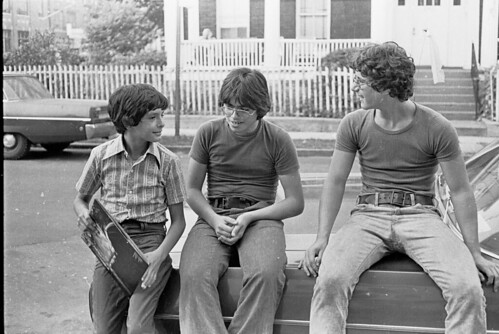Last Updated on May 13, 2011, 7:52 pm ET
Or, How Publishers Are Misusing 20th Century Guidelines To End Fair Use At GSU
Earlier this week, the publisher plaintiffs in the Georgia State University e-reserves case – Cambridge University Press, Oxford University Press, and Sage, with 50% funding from the Copyright Clearance Center – submitted their proposed injunction order, which presumably represents what they believe is a reasonable limitation on university copying going forward. It is the order that they believe the judge should issue if the publishers win the suit, which goes to trial on Monday, May 16.
Could safe harbors negotiated when these guys were cool become the outer limits of library fair use in the 21st Century?
As Kevin Smith has explained, the order represents an unworkable nightmare scenario for universities. Indeed, it is nothing less than a frontal assault on academic fair use.
The order is extraordinary in many respects, but one of its most striking features is that it would require GSU to limit its fair use copying to activities described in the 1976 Agreement on Guidelines for Classroom Copying in Not-For-Profit Educational Institutions with respect to books and periodicals (see p.6 ff. of the PDF). Indeed, the order imposes additional limits that make it even more draconian than the guidelines. The 1976 guidelines were negotiated between authors, publishers, and an ad hoc committee of educational users in connection with the passage of the 1976 Copyright Act. They do not have the force of law; rather, as Kenneth Crews has argued, the authoritative appearance of these guidelines is “merely illusory.”
It is significant that the plaintiff publishers purport to include the Guidelines as an appendix to their proposed order, but the version they append omits the Guidelines’ preface, which explains how the negotiating parties intended their rules to be used. That preface, excluded in the publishers’ filing, is reproduced below, with emphasis added:
The purpose of the following guidelines is to state the minimum and not the maximum standards of educational fair use under Section 107 of H.R. 2223. The parties agree that the conditions determining the extent of permissible copying for educational purposes may change in the future; that certain types of copying permitted under these guidelines may not be permissible in the future; and conversely that in the future other types of copying not permitted under these guidelines may be permissible under revised guidelines.
Moreover, the following statement of guidelines is not intended to limit the types of copying permitted under the standards of fair use under judicial decision and which are stated in Section 107 of the Copyright Revision Bill. There may be instances in which copying which does not fall within the guidelines stated below may nonetheless be permitted under the criteria of fair use.
The preface makes clear that the 1976 guidelines are not, and were never intended to be, a limit on academic fair use. And the negotiators were aware that courts might further define the scope of fair use in a way that allows more than the Guidelines would. Indeed, courts have done exactly that. If the Oxford University Press, Cambridge University Press, Sage, and the Copyright Clearance Center have their way, however, these minimum standards from the pre-Internet era will become maximums for at least one university, an outcome even the guidelines’ authors never intended.




